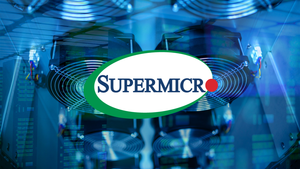
The cryptocurrency market has been navigating a turbulent "Red September" in 2025, characterized by significant selling pressure on flagship digital assets like Bitcoin (BTC) and Ethereum (ETH). As the overall market capitalization shrank to approximately $3.80 trillion, with Bitcoin dipping below $113,000 and Ethereum trading around $4,190, a compelling narrative of resilience and strategic diversification has emerged within the altcoin space. Amidst this broader market downturn, several established altcoins not only held their ground but posted notable gains, while a new wave of trending tokens saw explosive growth, signaling a sophisticated shift in investor behavior.
This divergence suggests a maturing market where investors are actively seeking value beyond the top two cryptocurrencies, exploring projects with strong fundamentals, clear utility, and compelling growth narratives. It underscores a growing appetite for targeted opportunities and risk mitigation, moving away from a purely Bitcoin-driven market sentiment and highlighting a nuanced approach to navigating volatility.
What Happened and Why It Matters: A Market Divided
"Red September" saw major cryptocurrencies like Bitcoin and Ethereum grapple with a confluence of headwinds, including a strengthening U.S. dollar, hawkish signals from the Federal Reserve, global regulatory uncertainties, and large-scale liquidations of leveraged long positions. The Crypto Fear & Greed Index dipped to 40, reflecting a cautious, "Neutral" market sentiment. Yet, against this backdrop, a select group of altcoins defied the trend, showcasing robust performance.
Avalanche (AVAX) emerged as a standout performer, surging by 10.52% and increasing 13.7% over the past week, pushing its market cap to $14.5 billion. This impressive rally is largely attributed to accelerating institutional momentum, with the Avalanche Foundation planning to raise $1 billion. Notably, (AgriFORCE Growing Systems) (AGRI) (NASDAQ), which rebranded to AVAX One, announced plans to raise $550 million for an AVAX-centric treasury. This, coupled with growing institutional interest from asset managers like VanEck and Grayscale filing for AVAX ETFs, signals sustained buying pressure. Furthermore, Avalanche's booming DeFi ecosystem, bolstered by the Octane upgrade which slashed C-Chain fees by 98%, led to a 493% quarter-over-quarter rise in average daily transactions and a doubling of Total Value Locked (TVL) to $2.23 billion.
XRP and BNB also posted modest gains of around 1.8% to 1.9%. XRP's resilience is underpinned by the resolution of its lawsuit with the U.S. Securities and Exchange Commission (SEC), providing much-needed regulatory clarity and paving the way for institutional adoption and speculation around XRP-spot ETFs. Its utility in cross-border payments was further highlighted by a 500% surge in payment transactions on the XRP Ledger. BNB's stability stems from the formidable strength of the BNB Chain ecosystem and Binance's dominance in global exchange volumes, along with its expanding utility in staking and DeFi. TRON (TRX) also saw modest gains, benefiting from its robust ecosystem, focus on decentralized applications (dApps), and stablecoin integrations, which attract users seeking yield and utility.
Beyond these established players, a new breed of trending tokens experienced explosive growth, indicating a flight to specific narratives and low-cap opportunities. AI Companions (AIC) soared by an astounding 181.4%, driven by surging investor trust in AI-infused blockchain ventures, strategic token buybacks reducing supply, and growing utility in creating decentralized AI assistants. A Hunters Dream (CAW) surged by 83.2%, fueled by its unique decentralized narrative, strong community support, and technical developments like LayerZero integration for gas-free cross-chain transactions. Hemi (HEMI) witnessed explosive growth of 54.3% in a day and nearly 500% over 30 days, positioning itself as a utility token powering a Bitcoin programmable layer, boasting over $1.2 billion in TVL, and benefiting from protocol upgrades like Pectra, as well as upcoming listings on major exchanges like Binance.
Strategic Shifts: How Divergent Performance Might Affect the Market
The divergent performance of altcoins during a broader market downturn signals a significant shift in market dynamics and investor strategies. This trend could lead to a more fragmented and sophisticated cryptocurrency landscape, moving beyond a simple correlation with Bitcoin's price movements.
One of the most profound effects could be a potential decoupling of certain altcoins from Bitcoin. Projects with strong fundamentals, unique technological propositions, and growing ecosystems are proving capable of charting their own course, even when Bitcoin faces headwinds. This suggests that individual project developments, adoption rates, and specific utility will increasingly become primary drivers of price action, rather than just overall market sentiment. This could lead to a more mature market where investors conduct deeper due diligence on specific projects.
The shift in capital allocation is another critical implication. Investors are actively diversifying away from purely Bitcoin-centric portfolios, allocating more capital to a basket of altcoins and stablecoins to manage risk and capture specialized growth. This sector rotation sees capital flowing into niche narratives like AI, Bitcoin Layer 2s, and DeFi, which demonstrate independent strength. This could lead to increased volatility within these specific niches, attracting speculative capital but also posing higher risks for less informed investors.
Furthermore, this trend highlights potential winners and losers in the evolving crypto ecosystem. Winners are likely to include Layer 1 blockchains with strong, active ecosystems and institutional backing, such as Avalanche. Utility-focused tokens like XRP (for payments) and BNB (for exchange utility and DeFi) are also demonstrating resilience due to their established use cases. Innovative niche projects, such as AI Companions and Hemi, leveraging cutting-edge technologies and addressing specific market demands, are poised for continued explosive growth if they deliver on their promises. Conversely, losers are typically highly speculative meme coins without clear utility, which experienced steeper declines during the downturn, and projects with weak fundamentals or opaque documentation, which are highly vulnerable to market pullbacks. Companies heavily reliant on sustained bullish sentiment for profitability may also face reduced earnings and increased operational challenges.
Broader Implications: A Maturing and Diversifying Industry
The ability of specific altcoins to thrive amidst a general market downturn carries broader implications for the entire cryptocurrency industry, signaling a significant evolution in its maturity, investor sophistication, and strategic direction. This period of divergence underscores several key industry trends.
Firstly, it emphasizes the emergence of niche narratives as powerful drivers of value. The success of tokens like AI Companions and Hemi highlights the growing importance of specialized sectors such as AI, Bitcoin Layer 2 solutions, and decentralized applications addressing specific technological or utility gaps. Projects that offer concrete technological advancements, unique use cases, and tangible utility are increasingly gaining traction and attracting capital, even in challenging market conditions. This indicates a shift from broad-based speculative interest to a more focused pursuit of projects solving real-world problems or offering distinct technological advantages.
Secondly, the increasing institutional interest in established altcoins like AVAX and XRP, evidenced by ETPs and ETF filings from major asset managers, points towards the institutionalization of altcoins. Institutions are expanding their horizons beyond just Bitcoin and Ethereum, recognizing the potential for diversified returns and innovative technologies within the broader altcoin market. This influx of institutional capital could bring greater stability, liquidity, and mainstream legitimacy to selected altcoins, fostering a more robust and regulated market environment.
Thirdly, the focus on utility and technology is becoming paramount. Projects demonstrating strong protocol development, growing ecosystems, and real-world applications (e.g., Avalanche's DeFi growth, XRP's payment solutions, Hemi's Bitcoin programmability) are outperforming purely speculative assets. This trend suggests that fundamental value and technological innovation are increasingly important determinants of success, pushing the industry towards a more sustainable and impactful future. Regulatory clarity, as seen with XRP, will continue to play a crucial role in shaping investor confidence and attracting institutional capital. Historically, periods of market correction often weed out less robust projects, allowing those with strong foundations to shine, similar to the dot-com bubble burst where only companies with viable business models survived.
What to Pay Attention to Next: Navigating the Evolving Crypto Landscape
As the cryptocurrency market navigates this period of transition and divergence, investors and industry participants should closely monitor several key areas to anticipate future trends and opportunities. The coming months will likely test the resilience of these altcoin narratives and determine the long-term impact of this strategic diversification.
In the short-term, pay attention to the continued performance of established altcoins like AVAX, XRP, BNB, and TRON. Their ability to sustain gains or further solidify their positions during any lingering market volatility will be a strong indicator of their fundamental strength and institutional appeal. Watch for further announcements regarding institutional partnerships, regulatory developments, and significant upgrades to their respective ecosystems. For trending tokens like AI Companions, A Hunters Dream, and Hemi, monitor their adoption rates, product launches, and progress towards their stated roadmaps. Any major exchange listings or significant partnerships could provide further boosts, while any delays or unmet promises could lead to swift corrections.
In the long-term, the implications for market opportunities and challenges are substantial. The growing emphasis on niche narratives, such as AI and Bitcoin Layer 2s, suggests that investors should continue to research and identify emerging sectors with strong technological foundations and clear utility. This could lead to new waves of innovation and investment opportunities beyond the current established categories. However, it also presents challenges, as identifying truly promising projects amidst a sea of speculative ventures requires increased due diligence and a deeper understanding of underlying technology and tokenomics. Potential strategic pivots or adaptations may be required for projects that fail to demonstrate tangible utility or attract significant user adoption.
Furthermore, regulatory developments will remain a critical factor. The clarity gained by XRP highlights the profound impact regulatory certainty can have on investor confidence and institutional adoption. Watch for evolving regulatory frameworks globally, as these will shape the environment for altcoin innovation and investment. The increasing sophistication of investors, evidenced by their diversification strategies, suggests a growing demand for transparent, well-governed projects. Potential scenarios include a continued decoupling where altcoins with strong fundamentals and clear use cases increasingly move independently of Bitcoin, or a market where niche sectors become the primary drivers of speculative and institutional interest, leading to a more specialized and fragmented investment landscape.
Conclusion: A Maturing Market and the Rise of Strategic Investing
The "Red September" of 2025, while challenging for major cryptocurrencies, has unveiled a compelling narrative of resilience and strategic diversification within the altcoin market. The divergent performance, with established assets like Avalanche (AVAX), XRP, BNB, and TRON (TRX) posting gains, and trending tokens such as AI Companions, A Hunters Dream, and Hemi experiencing explosive growth, underscores a significant evolution in investor behavior and market dynamics.
The key takeaway is that the cryptocurrency market is maturing beyond a singular focus on Bitcoin and Ethereum. Investors are demonstrating increased sophistication, actively seeking out projects with strong fundamentals, clear utility, and compelling growth narratives, even amidst broader market downturns. This shift towards diversification, sector rotation, and a focus on technological advancements is creating a more complex yet potentially more robust ecosystem. The institutionalization of altcoins, driven by regulatory clarity and a pursuit of alpha, further validates this trend, suggesting a future where a broader range of digital assets will attract significant capital.
Moving forward, investors should watch for continued institutional interest in altcoins, the development and adoption of niche technologies like AI and Bitcoin Layer 2s, and the ongoing impact of global regulatory frameworks. The market is likely to become more fragmented, with individual project success increasingly tied to innovation, utility, and community engagement rather than just overall market sentiment. This period marks a pivotal moment, signaling a lasting impact on how value is perceived and pursued within the dynamic world of cryptocurrencies, emphasizing strategic investing over purely speculative plays.






